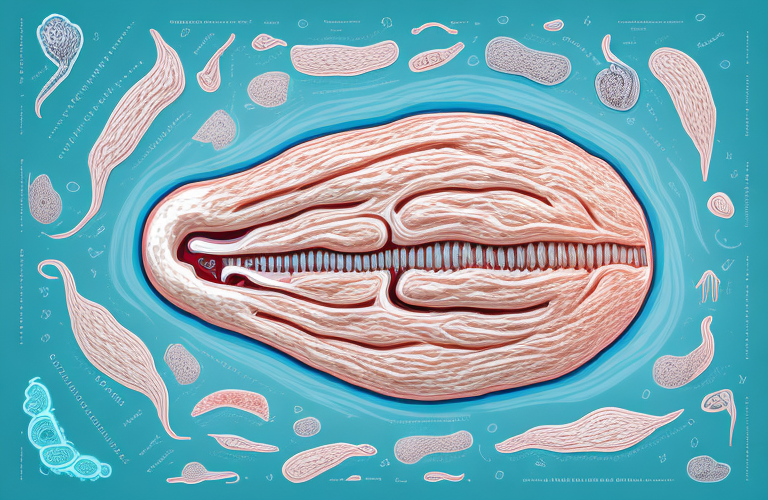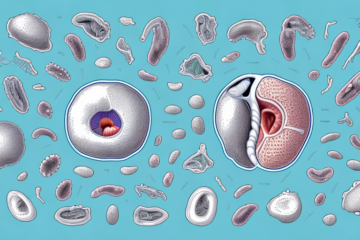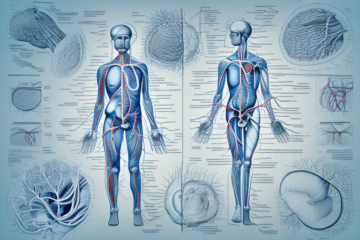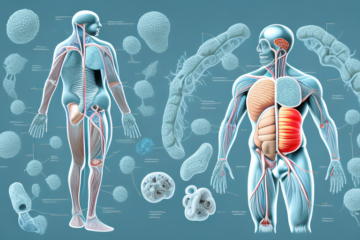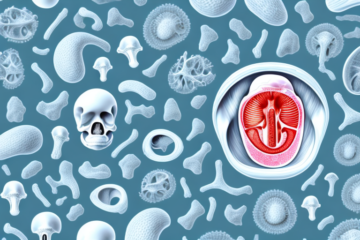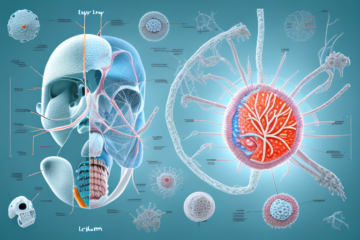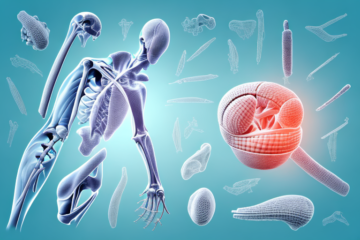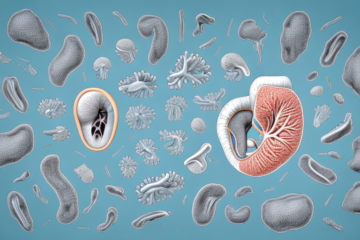During pregnancy, the placenta plays a crucial role in the development of the fetus and the health of the mother. Understanding the function and anatomy of this vital organ is critical for any expectant parent. Here, we’ll explore everything you need to know about the placenta, from its development to the benefits of delayed cord clamping and more.
What is the Placenta and Why is it Important?
The placenta is an organ that develops during pregnancy and provides the fetus with oxygen and nutrients. It also removes waste products from the baby’s blood, such as carbon dioxide. The placenta is attached to the wall of the uterus and is connected to the fetus by the umbilical cord. Without the placenta, a fetus cannot survive.
In addition to its vital role in providing oxygen and nutrients to the fetus, the placenta also plays a crucial role in hormone production during pregnancy. It produces hormones such as estrogen, progesterone, and human chorionic gonadotropin (hCG), which help regulate the pregnancy and prepare the mother’s body for childbirth. The placenta also acts as a barrier, protecting the fetus from harmful substances that may be present in the mother’s bloodstream, such as certain medications or infections.
The Anatomy of the Placenta: A Detailed Overview
The placenta is composed of two main layers: the maternal side and the fetal side. The maternal side is in contact with the uterine wall and is made up of blood vessels and tissue. The fetal side faces the fetus and is covered in tiny finger-like projections called villi, which are bathed in maternal blood. These villi increase the surface area of the placenta, allowing for greater exchange of oxygen, nutrients, and waste products between the mother and fetus.
In addition to its role in nutrient and waste exchange, the placenta also plays a crucial role in hormone production during pregnancy. It produces hormones such as estrogen, progesterone, and human chorionic gonadotropin (hCG), which help to maintain the pregnancy and support fetal development. The placenta also acts as a barrier, protecting the fetus from harmful substances that may be present in the mother’s bloodstream.
How Does the Placenta Develop During Pregnancy?
The placenta begins to form shortly after conception, when the fertilized egg implants in the uterine wall. Over the next few weeks, the placenta develops alongside the embryo. By the end of the first trimester, the placenta is fully formed and functioning.
During pregnancy, the placenta plays a crucial role in providing oxygen and nutrients to the developing fetus. It also helps to remove waste products from the fetal bloodstream. The placenta is made up of both maternal and fetal tissue, and it is connected to the fetus by the umbilical cord. In addition to its nutritional functions, the placenta also produces hormones that help to maintain the pregnancy and prepare the mother’s body for childbirth.
The Role of the Placenta in Fetal Development
The placenta works to transfer oxygen and nutrients from the mother’s blood to the fetus and to remove waste products from the fetus’s blood. It also produces hormones that are essential for pregnancy, such as estrogen and progesterone.
Additionally, the placenta acts as a barrier between the mother and fetus, protecting the fetus from harmful substances that may be present in the mother’s blood, such as certain medications or toxins. It also plays a role in regulating the immune system of the fetus, helping to prevent rejection of the fetus by the mother’s body.
However, in some cases, the placenta may not function properly, leading to complications such as preeclampsia or fetal growth restriction. In these cases, medical intervention may be necessary to ensure the health and safety of both the mother and fetus.
Understanding the Blood Supply of the Placenta
Blood flows to and from the placenta through the umbilical cord. The umbilical cord contains three blood vessels: two arteries and one vein. Oxygen-rich blood from the mother travels through the placenta to the fetus via the umbilical vein, while waste products and carbon dioxide from the fetus travel through the umbilical arteries to the placenta, where they are removed.
The blood supply of the placenta is crucial for the development and growth of the fetus. The placenta not only provides oxygen and nutrients to the fetus, but it also acts as a barrier, protecting the fetus from harmful substances that may be present in the mother’s blood. Additionally, the placenta produces hormones that help regulate the pregnancy and prepare the mother’s body for childbirth. It is important for pregnant women to maintain a healthy lifestyle and attend regular prenatal check-ups to ensure the proper functioning of the placenta and the health of the developing fetus.
Placental Problems: Causes, Symptoms and Treatment Options
Unfortunately, like any organ, the placenta can experience problems during pregnancy. Some of the most common placental issues include placenta previa (when the placenta covers the opening of the cervix), placental abruption (when the placenta separates from the uterus), and preeclampsia (a condition characterized by high blood pressure and protein in the urine). Treatment options depend on the specific problem and may include close monitoring, bed rest, medication, or delivery of the baby via c-section.
It is important for pregnant women to be aware of the signs and symptoms of placental problems, which may include vaginal bleeding, abdominal pain, and high blood pressure. If any of these symptoms occur, it is important to seek medical attention immediately. Additionally, women with a history of placental problems or other high-risk factors may require more frequent prenatal visits and monitoring throughout their pregnancy to ensure the health of both mother and baby.
The Connection Between the Placenta and Maternal Health
The health of the placenta is closely linked to the health of the mother. Chronic conditions like diabetes or high blood pressure can affect placental function and lead to complications during pregnancy. Similarly, the presence of infections or exposure to harmful substances like alcohol or drugs can also harm the placenta.
Furthermore, the placenta plays a crucial role in the transfer of nutrients and oxygen from the mother to the developing fetus. If the placenta is not functioning properly, the fetus may not receive adequate nutrition and oxygen, which can lead to growth restriction and other complications.
It is important for pregnant women to receive regular prenatal care to monitor the health of the placenta and address any potential issues. This may include regular ultrasounds, blood tests, and monitoring of blood pressure and blood sugar levels. By taking care of their own health, women can also help ensure the health of their developing baby and the placenta that supports them.
Exploring the Benefits of Delayed Cord Clamping
Delayed cord clamping is a practice in which the umbilical cord is not cut immediately after birth. Instead, it is allowed to continue pulsing for several minutes, ensuring that the baby receives all of the blood and nutrients contained within the placenta. Studies have shown that delayed cord clamping can lead to higher iron levels in babies and a lower risk of anemia.
In addition to the benefits of higher iron levels and lower risk of anemia, delayed cord clamping has also been linked to improved cardiovascular function in newborns. The extra blood and oxygen received during delayed cord clamping can help the baby’s heart and lungs adjust to life outside the womb.
Furthermore, delayed cord clamping can also benefit premature babies. Studies have shown that premature infants who undergo delayed cord clamping have a lower risk of intraventricular hemorrhage and require fewer blood transfusions compared to those who undergo immediate cord clamping.
How to Maintain a Healthy Placenta during Pregnancy
While some placental problems are unavoidable, there are steps women can take to promote placental health during pregnancy. Eating a healthy diet, getting regular exercise, and avoiding harmful substances like alcohol and tobacco are all key factors in maintaining good placental function. Additionally, regular prenatal care and monitoring can help doctors catch any potential issues early on.
Another important factor in maintaining a healthy placenta is managing stress levels. High levels of stress can lead to increased inflammation in the body, which can negatively impact placental function. Women can try relaxation techniques such as yoga, meditation, or deep breathing exercises to help manage stress during pregnancy.
It is also important for women to stay hydrated during pregnancy to support placental health. Drinking plenty of water can help ensure that the placenta is receiving enough blood flow and nutrients. Women should aim to drink at least 8-10 glasses of water per day, and more if they are exercising or in hot weather.
The Use of Placental Tissue in Medical Research and Therapy
Placental tissue contains stem cells, which have the potential to develop into a number of different cell types. These cells can be used in research to explore new therapies for a range of illnesses and conditions, from heart disease to cancer.
In addition to stem cells, placental tissue also contains a variety of growth factors and cytokines that can promote tissue regeneration and healing. This makes it a valuable resource for developing new treatments for injuries and chronic conditions such as osteoarthritis. Researchers are also exploring the potential of placental tissue in the field of regenerative medicine, where it may be used to repair or replace damaged tissues and organs.
Differences in Placental Function between Singleton and Multiple Pregnancies
In multiple pregnancies (twins, triplets, etc.), the placenta must work harder to supply oxygen and nutrients to multiple fetuses. This can sometimes lead to complications like preterm labor or low birth weight. As a result, careful monitoring and additional ultrasounds may be necessary during multiple pregnancies.
On the other hand, in singleton pregnancies, the placenta has a less demanding job of supplying oxygen and nutrients to only one fetus. This often results in a smoother pregnancy with fewer complications. However, it is still important to monitor the placental function in singleton pregnancies to ensure the health and well-being of the developing fetus.
The Evolutionary Significance of the Human Placenta
The placenta has played a crucial role in the evolution of mammals, allowing for greater fetal development and survival. In humans, the development of the placenta allowed for the growth of larger brains and longer gestation periods, leading to the evolution of our high cognitive function and complex social structures.
Recent research has also shown that the placenta plays a role in shaping the immune system of the developing fetus. It acts as a barrier, protecting the fetus from harmful pathogens while also allowing beneficial microbes to pass through. This interaction between the placenta and the developing immune system may have implications for the health of the individual later in life.
Furthermore, the placenta is not just important for fetal development, but also for maternal health. It produces hormones that regulate the mother’s metabolism and blood pressure, and it also helps to prevent the mother’s immune system from attacking the fetus. Understanding the complex interactions between the placenta and the mother’s body is crucial for improving maternal and fetal health outcomes.
Future Implications for Studying and Understanding the Placenta
As researchers continue to explore the function and potential of the placenta, there is the potential for new discoveries in the field of maternal-fetal medicine. Improved understanding of the placenta could lead to new therapies for a range of conditions, from preterm labor to gestational diabetes.
In conclusion, the placenta is a remarkable organ that plays a vital role in the development and health of both the mother and the fetus. Understanding its function, anatomy, and potential complications is essential for any expectant parent.
Furthermore, recent studies have shown that the placenta may also play a role in the long-term health of the offspring. Research has suggested that the placenta may be involved in programming the fetal epigenome, which can impact the child’s risk for developing certain diseases later in life, such as obesity and cardiovascular disease. This highlights the importance of continued research into the placenta and its potential impact on both maternal and fetal health.

